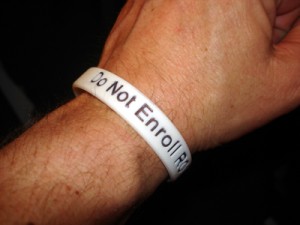The federal government shut down part of a medical experiment in which everyone in North Texas is a potential subject even though they probably don’t know about it.
Trauma victims who were unwittingly used to test a blood substitute died quicker than patients not involved in the experiment, according to a brief statement released last week by the federal government.
Paramedics taking patients to emergency trauma centers in Fort Worth and Dallas last year, as well as nine other metro areas, gave an experimental “hypertonic” saline solution to some severe shock victims in the field. Other patients received standard saline. The hypertonic solution is more highly concentrated.
The test was suspended in August after monitors found no difference between the two groups during a 28-day period after the solutions were given.
“However, more of the patients receiving hypertonic saline died before reaching the hospital or in the emergency room, while more of the patients receiving normal saline died during the remainder of the 28-day follow-up period,” the government noted in a statement.
Another portion of the experiment continues: Anyone with a traumatic brain injury remains a possible — and unknowing — candidate for the hypertonic solution treatment.
The only way to get out of the experiment is to request a wrist bracelet that says, “Do Not Enroll ROC.” ROC stands for Resuscitation Outcomes Consortium Project, the experiment’s official name.
Paramedics are supposed to see it and know to give only standard fluid. Only 150 North Texas residents have requested the bracelets, which are free and available to the public by phone or e-mail. (Call 214-648-6726 or send an e-mail to roc@utsouthwestern.edu.)
The idea of a bracelet keeping people out of a medical experiment they don’t know about is both preposterous and wrong, a bioethicist says.
“Who’s going to wear a bracelet? That’s the silliest darn thing I ever saw,” says George J. Annas of Boston University.
These results show, he says, that “people have less of a chance getting to the hospital alive if they take this stuff. So who is going to take it then if people know about that? I think, in the end, nobody.”
But most don’t know about the experiment.
After The Watchdog showed readers a year ago how to opt out of the experiment, the number of North Texans who requested bracelets climbed from under 30 to 150, says Dr. Ahamed Idris, professor of surgery at the University of Texas Southwestern Medical Center at Dallas and a principal investigator.
When people ask for a bracelet, he tells them about the experiment. Often, he convinces them to change their mind and be a willing participant if they fall victim to a terrible injury, he says.
Last year, Idris told me he believed the test solution would help improve blood pressure and save lives.
Now with half the experiment halted, he says: “I’m still enthusiastic because we’re still treating people with traumatic brain injury, and I will be ecstatic if it shows that we’re saving people’s lives.”
Scientists are measuring whether the hypertonic saline, already used in Europe, does save lives.
Paramedics don’t know which fluid they are giving patients. And the patients, severely injured and requiring immediate treatment, are unable to give consent.
One thousand patients, all of them unaware, were involved in the largest known nonconsent experiment in U.S. history, a five-year, $50 million federally funded program. It began in Dallas in October 2006.
Because the experiment is nonconsent, the burden for positive results is higher than for patients receiving standard care, says Dr. George Sopko of the National Heart, Lung and Blood Institute, the program’s government sponsor. “The treatment has to be better. That’s the key principle.”
The experiment should be heavily publicized, especially since a portion failed, Annas says.
“They’ve got to figure out a way to tell people now that a related study didn’t work and it killed people,” Annas says. “According to their data, they died sooner.”
Program officials say they are always looking for ways to publicize the program. Look, for example, for a promotional booth touting the project at Fort Worth’s Main Street Arts Festival and also at MayFest 2009.
“We have talked personally to literally thousands of people, and none of them have told us that they think what we’re doing is wrong,” UT Southwestern’s Idris says.
Scientists say the only way to get enough trauma patients to make the study valid is through nonconsent.
The bioethicist says that not fair to victims.
“When you’re in accident, do you want the best treatment?” Annas asks. “Or do you want them to flip a coin to decide what treatment to use?”
How to avoid the study
Get a bracelet by calling 214-648-6726 or send an e-mail to roc@utsouthwestern.edu. You’ll receive a wristband to alert paramedics you don’t want to participate.
Who is involved?
- These North Texas emergency trauma centers are involved in the Resuscitation Outcomes Consortium Project.
- John Peter Smith Hospital, Fort Worth
- Texas Health Harris Methodist Hospital Fort Worth
- Parkland Hospital, Dallas
- Baylor University Medical Center, Dallas



